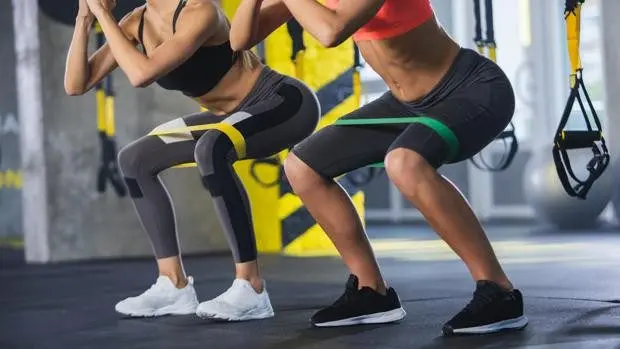Contents
- This is what happens if you use resistance bands when doing squats
- Fitness
- The elastic bands can be used in different ways and also vary the resistance, that is, in a single accessory you have multiple options to do different exercises and work different muscles
- How to do the perfect squat: these are the most frequent mistakes
This is what happens if you use resistance bands when doing squats
Fitness
The elastic bands can be used in different ways and also vary the resistance, that is, in a single accessory you have multiple options to do different exercises and work different muscles
How to do the perfect squat: these are the most frequent mistakes

If there is a comfortable fitness material that is undoubtedly the resistance band. Not only does it not weigh, it does not take up space either and it is the perfect accomplice to intensify our workouts by placing it at different leg heights.
And although they can be used in various exercises, using them to squat is one of the best options. Sara Álvarez, founder and creator of the Reto 48 methodology, explains that to do a perfect squat with bands, first of all, you would have to know that they exist different colors that define the intensity we are faced with, something that supports the personal trainer Javier Panizo, who assures that the color of the rubber and its thickness indicate the level of resistance and hardness of the rubbers: «You must start with the lightest and go increasing its hardness progressively as you improve your technique and muscle strength ».
Once we have chosen it, we have to place it:
— Above the knees if we are starting. In this way it can help us to do the position in a correct way and with greater resistance.
— Below the knees if we want to work the gluteus medius a little more.
“From the starting position, looking straight ahead and feet shoulder-width apart and toes slightly outward, we place the band above or below the knees, depending on the objective and level of the exercise,” says Sara Álvarez.
Then you should bend your knees and begin to go down with your back straight, “as if we were sitting in an imaginary chair.” We pull the glute out slightly, flex the hips and place the thighs horizontally. Your knees should be at a 90 degree angle. “The elastic band will help us to ensure that the knees do not move inwards and therefore the exercise will be more effective”, says Sara Álvarez.
Bands benefits
– By using the elastic bands we constantly work the abdomen and stabilize the core, so you work on balance at the same time.
– The elastic bands can be used in different ways and also vary the resistance, that is, in a single accessory you have multiple options to work different exercises and muscles.
– With the elastic bands you can start doing mobility and then work different parts of the body, such as the upper body and the lower body. We can also use them to do stretching.
– It is not the same as training with weight, since this is constant, the band increases resistance as you stretch.
We can work the two trains (upper and lower) some exercises are:
For the upper body: shoulder press, row, bicep, tricep, chest or pectoral press, push up with resistance …
For the lower body: glute kick, squat, deadlift, glute bridge, walking squat, bicycle …
Other band exercises
Quadruped with rear elevation. Starting in a quadruped position and with the rubber bands under your legs, bring your left leg straight back and pick it up in the starting position. You should do this exercise with both legs, dedicating one minute to each of them. After 30 seconds he changes legs.
Band flex. We will place ourselves on the floor face down in a flexion position and we will place the elastic band or rubber bands on the forearm, at a height slightly higher than the wrists.









